Derain white "Siberica": description, planting and care
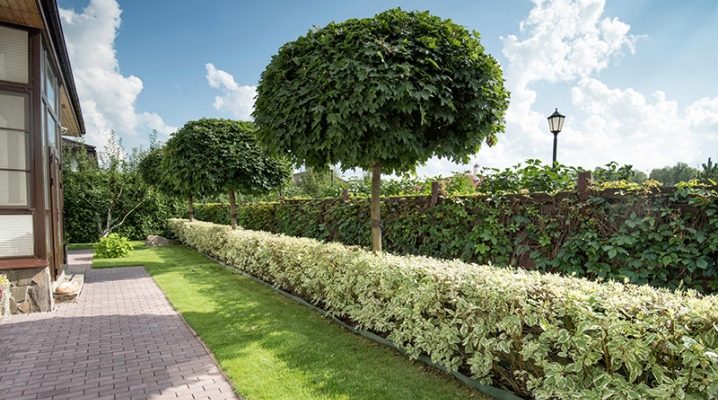
Summer cottages delight the eye not only with their well-groomed beds and fruit trees, but also with their decoratively decorated landscape. Numerous shrubs are used for the decoration of the territory, one of which is the white turf "Sibirica".
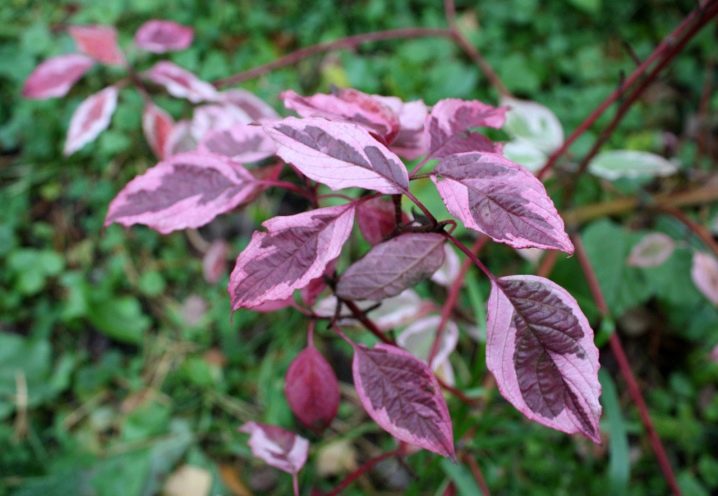
Description of the variety
Decorative white Siberian turf, which is a representative of the cornel family, is a fast-growing deciduous shrub with a spreading lush crown (up to two meters in diameter) and reaching a height of about three meters. Siberia is considered its homeland, hence the name - "Siberica". White derain is represented by numerous varieties (about 50), among which the most popular are "Pearl of Siberia" and "Sibirica Variegata" (Cornus alba Sibirica Variegata).
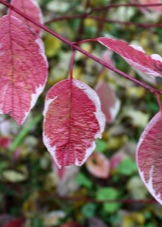
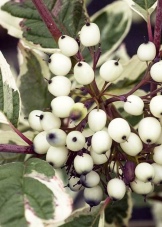
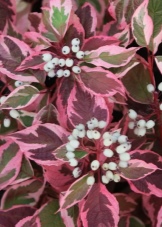
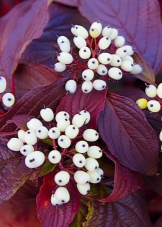
It is impossible to confuse variegated turf with other shrubs, since it has special distinctive features. Its branches differ in color, unusual for woody plants. They can be of any red shade - from delicate coral to bright scarlet, from burgundy to red-brown. A young shrub has a richer color than an old one, in which the color may have a gray tint. In spring and autumn, the colors are most pronounced.
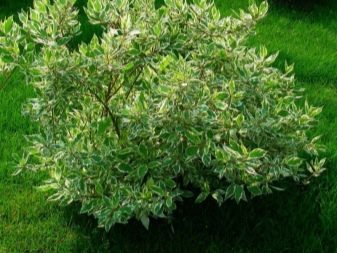
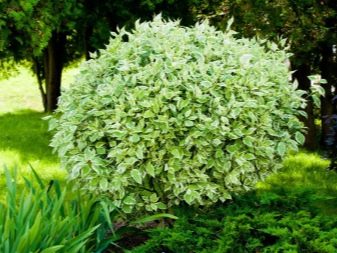
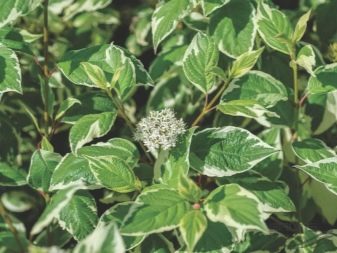
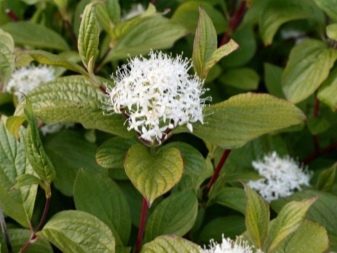
In a young bush, branches with a shiny bark are flexible and straight, and they form a dense and lush crown, but as they age, they bend arched.
Another distinctive feature is its leaves. They are oval in shape, rather large, with a dark green outer surface and a gray-green inner surface. The leaves around the entire perimeter have a white or cream edging that follows the shape of the leaf, and there may also be specks and stripes on it. Variegated foliage has the ability to change color. By autumn, it turns purple-violet, but the edging remains. On slightly pubescent wrinkled leaves, sitting opposite, arched veins are clearly visible.
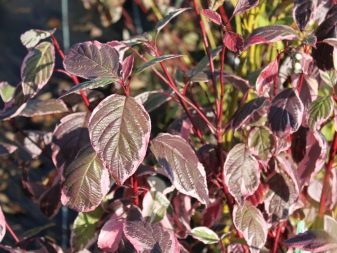
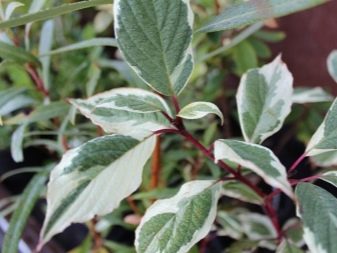
The tree blooms creamy with a greenish tint with fluffy inflorescences-shieldscontaining several small flowers with a fragrant scent. Flowering occurs twice: May-June and autumn - September-October. Fruits with a slight waxy bloom are very small inedible berries with a stone, which have a bluish-blue color, which turns white with a slight bluish tinge when the fruit ripens.
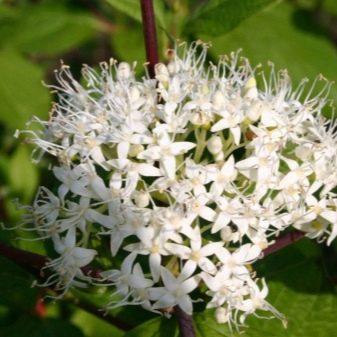
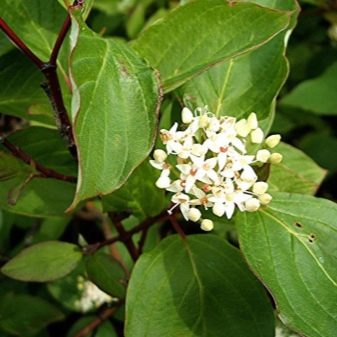
Derain white "Siberica" is unpretentious, able to grow for many years without transplanting to another place and perfectly adapts to the conditions of the urban environment.
Landing rules
The shrub is unpretentious in cultivation. Possesses good resistance to frost and drought. "Sibirika" does not show any special requirements for the soil and grows on soils of any type, but it is better still on loamy and sandy loam, slightly acidic, preferably moist, soil. It is necessary to add sand to clay soil, and clay is introduced to sandy soil. Effectively adding peat and humus to the soil.
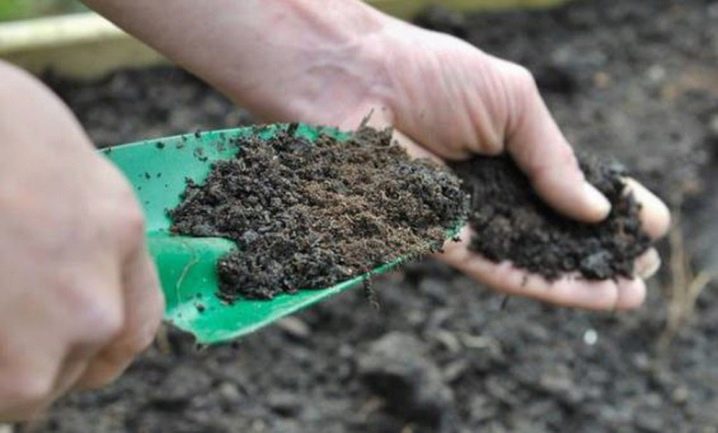
When planting a shrub, some simple rules must be followed. First of all, it is the choice of the seat. Derain needs good lighting, with a lack of light, colors lose their saturation. However, it does not tolerate bright direct sunlight. Therefore, the best place to plant is in shaded areas, partial shade. Before planting a bush, you need to dig up the selected area, add humus.
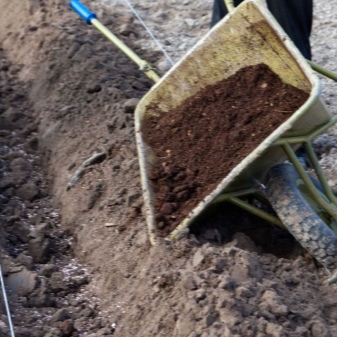
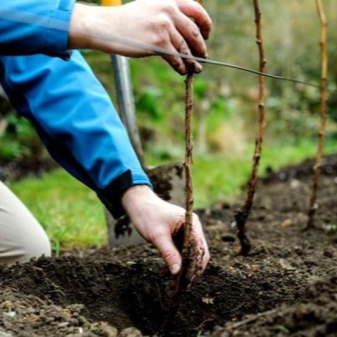
But it is also very important to correctly position the holes. The gap between them should be approximately 0.7-1 m, and the depth should be at least 0.5 m.The size of the hole should be such that the roots fit into it. Drainage (crushed stone, gravel) must be placed at the bottom of the hole. This is necessary so that there is no stagnation of water, which can lead to root rot. And also compost or humus must be added to each hole.

The seedling is placed in a hole so that the root can fully fit in it, and the root collar deepens by 1.5-3 cm into the ground or can be on the same level with the soil. Then the pits are covered with a mixture of turf (2 parts), compost (2 parts), sand (1 part) and peat (1 part), compacted and watered. The best time to plant a shrub is in early spring and autumn.
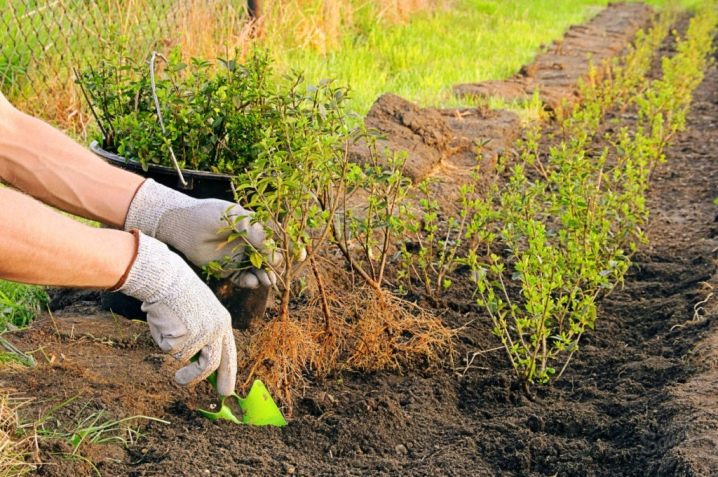
Subtleties of care
Derain does not require complex maintenance, but it must be regular and timely. The care requirements are the same as for any other crop. Young, newly planted bushes need to be watered frequently, especially in the spring and summer. After a year or two, when the lawn grows well, watering is carried out less often, but in very hot weather it is mandatory. In normal weather with periodic rains, natural moisture is sufficient for good growth of the shrub. Additional watering only results in very thick shoots.

With a lack of natural moisture, watering is carried out two to three times a month, pouring about two buckets of water under each bush. Mulching the soil under the bushes will help preserve moisture after rain and watering. And it is also necessary to carry out weeding as the weeds grow. Together with weeding, the soil under the plants is also loosened. Derain does not require frequent feeding like other plants. After planting, young bushes can be fed in the summer by adding a little peat or humus. With very scarce land, feeding is possible, which is applied twice - complex mineral fertilizers are added in the spring, 150 g per bush, and in the summer it is more effective to use organic matter - up to 5 kg of humus or compost.

An important place in the care is occupied by the formation of the crown of the bush, which begins at the age of three. Pruning stimulates shoot growth and branching at the bottom of the shrub. It is carried out twice a year - in the spring, before the leaves bloom, and in the fall. First of all, diseased, dry and obsolete (over three years old) branches are removed, as well as very long branches protruding beyond the contour of the bush. This gives the bush a neat, well-groomed look. The shorter you leave the branches (up to 20 cm long), the thicker the crown will be. The hedge shrub can also be trimmed in summer to maintain its shape. Timely pruning allows you to maintain the density of the crown, adjust the size of the bush, not allowing it to grow too much.
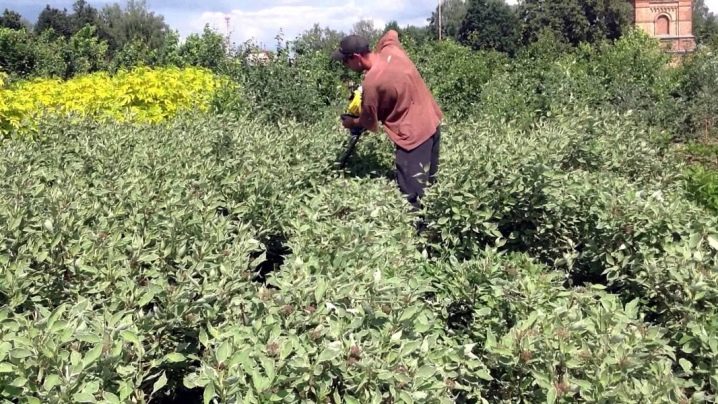
Breeding features
There are several ways of breeding "Siberica":
- seeds;
- cuttings;
- dividing the bush;
- using layering.
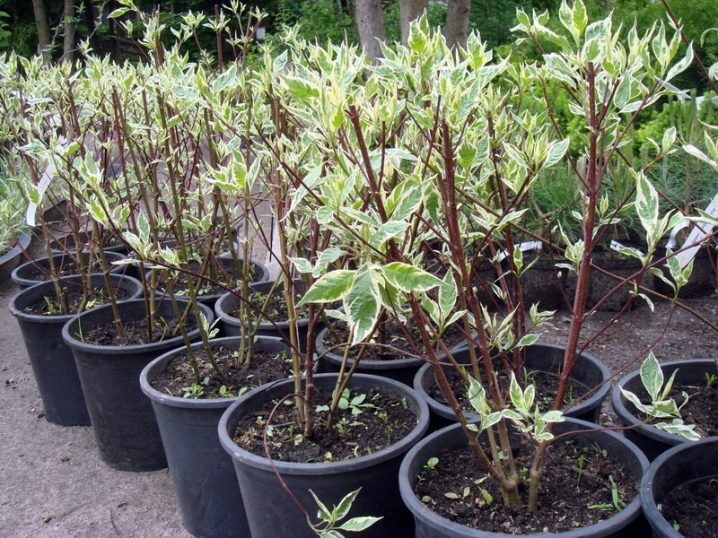
The seed method is a long-term process, since the growth and development of seedlings is very slow. Therefore, it is rarely used in horticulture. The shrub bred in this way begins to bloom after a long time (after 3-4 years). The planting seeds should be harvested in the fall after the fruit is ripe. Before sowing, they are stratified for 1-1.5 months at a temperature of about +4 degrees. Then they act in this order:
- prepare a soil consisting of peat, moss, sand and sawdust;
- the soil mixture is placed in the cold for disinfection;
- the seeds are mixed with the prepared mixture in a ratio of 1: 3;
- then they are planted in the soil, deepening about 5 cm into the ground.
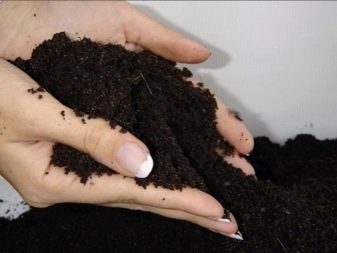
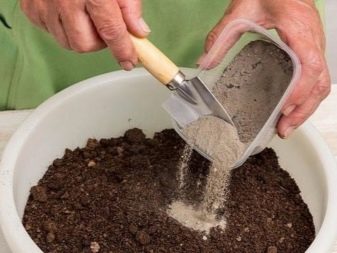
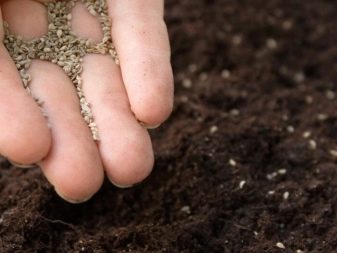

You can plant it in the ground either in early spring or in autumn. A bush grown by a seed method takes shape only by two or three years.
The most popular and effective method is grafting. Cuttings can be cut from an adult bush in spring and autumn. Cuttings are often harvested during spring pruning. Correct grafting is carried out as follows:
- the upper part of the shoots of an adult shrub is cut off;
- there must be at least 9 buds on the handle;
- the cutting is planted in moist soil;
- during windy weather, it is recommended to install supports;
- after about 2 weeks, the roots appear at the cutting, and it takes root;
- cuttings are insulated for the winter.
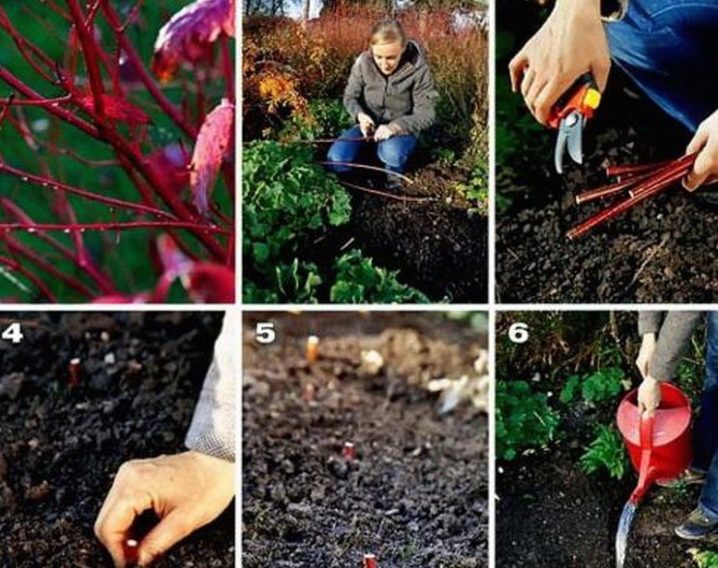
In the spring, young bushes are transplanted to the right place. It is more effective to germinate autumn cuttings at home in winter and plant in the ground in spring. The turf grown by cuttings has a very beautiful bush. Reproduction by dividing the bush is usually carried out in the spring, but it is also possible in the fall. For division, 3-4-year-old shrubs are most often taken. After digging up and freeing the roots from the soil, the bush is carefully divided into parts. It is recommended to hold the roots in water for 1-2 hours before planting.

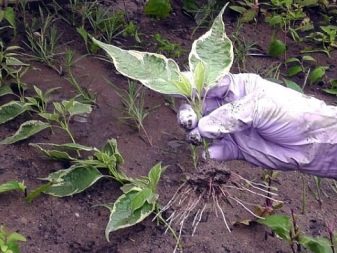
In the spring, you can also propagate the grass by layering. Lower young inclined shoots are grounded, fixed in the soil and covered with soil. They are then taken care of as usual. The next spring, the branch that gave the roots is dug up and planted in another desired place.
Diseases and pests
Siberica has good immunity to infections and damage from harmful insects. At a young age, white turf can be affected by powdery mildew. Adult bushes usually do not get sick with it. The symptom of the disease is the appearance of white bloom on the foliage. Infection can be caused by drought, moisture saturation, or fluctuations in daily air temperature. The shrub is treated by spraying with a decoction of horsetail. It is prepared as follows: dried herb (100 g) is poured with cold water (1 l), infused for 24 hours, then the infusion must be boiled for 40 minutes. The finished product is filtered and diluted with water (1: 5). Spraying is done every 5 days.
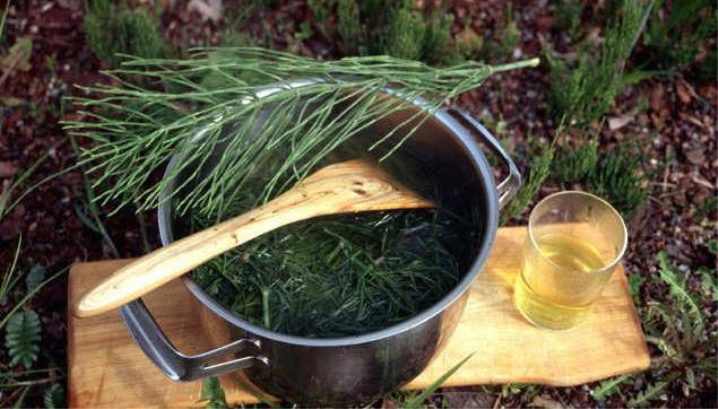
Processing can be carried out with colloidal sulfur, a mixture of soda and soap. Bordeaux liquid is used when stains appear on foliage. For prophylaxis, it is recommended to plant turf with a large gap between the bushes (up to two meters), and water it under a bush, since irrigation of the crown can provoke a disease with this fungus. White turf is extremely rarely exposed to the invasion of insect pests, but the appearance of aphids, scale insects and ants is still possible. Against the scale insects, the "Actellik" and "Phosbecid" remedies are effective, with which you need to spray the bush 3 times in 4 days.

Aphid colonies can be washed off with a strong water jet, or aphid can be removed by hand. In addition, insecticidal preparations can be used.
The appearance of ants is often associated with the appearance of aphids, which they feed on. Fighting aphids at the same time prevents the appearance of these insects. In addition, the installed sweet traps also get rid of ants. An important role in preventing the appearance of pests is played by preventive treatments of the shrub with such means as decoctions - onion and from potato tops, as well as infusion of yarrow.
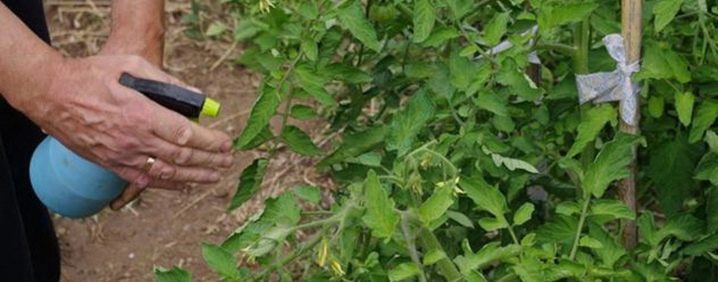
Application in landscape design
Derain white is decorative at any time of the year. In autumn and even in winter without foliage, it is a decoration of the garden thanks to its painted branches. It is also widely used because it is very unpretentious: it grows in illuminated places and in the shade, tolerates frost well, adapts well to the conditions of the urban environment, and tolerates the neighborhood of taller plants well. The scope of application of "Sibirika" is quite wide: it decorates the landscape of gardens, parks and squares, is used in landscaping city streets and territories of private estates. In landscape design they use:
- both single and group plantings, the dogwood looks beautiful against the background of white trunks of birches and dark thujas;
- for the design of alleys and park paths;
- for the formation of living fences in summer cottages and territories of country houses, where it will perfectly hide outbuildings, fences and walls;
- as a background for creating decorative compositions in squares and parks.
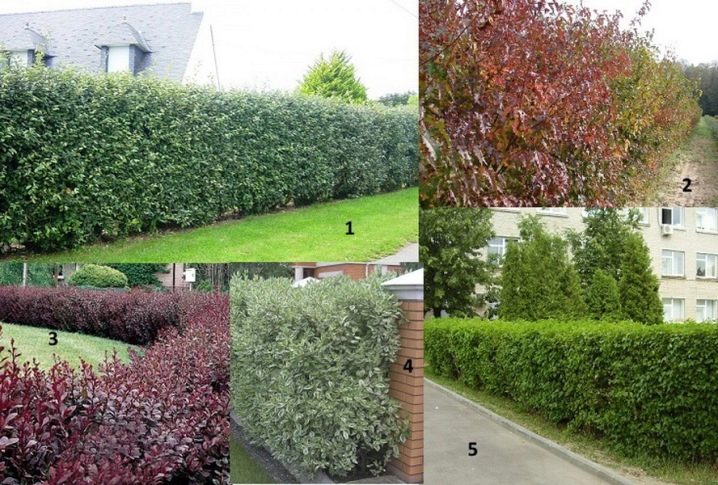
In garden design, the lawn is often placed in the main conspicuous place, but can also be used in mixed compositions in the depths of the site. It is used to decorate ensembles of herbaceous and coniferous plants, especially for decorating curtains. It goes well with barberry, honeysuckle. Delicate roses, multi-colored lilies and fluffy chrysanthemums stand out brightly against its variegated background. The variegated leaves of "Siberica" look beautiful in the alpine hills, against the background of lawns with rich green grass, the crown of periwinkle, ivy and other climbing plants.

Derain looks spectacular in winter: against a snow-white background, its scarlet branches burn brightly, creating an elegant colorful landscape that pleases the eye. Derain white goes well with conifers of trees and shrubs: cypresses and blue spruces, juniper and creeping thuja. It is often used in the design of winter gardens. Plants are often planted under the shrub, covering the soil and contrasting in color, such as rejuvenated, aubrieta, and herbal carnation. A low living fence will beautifully divide the territory into separate sections intended for different purposes, and will close the buildings and walls.
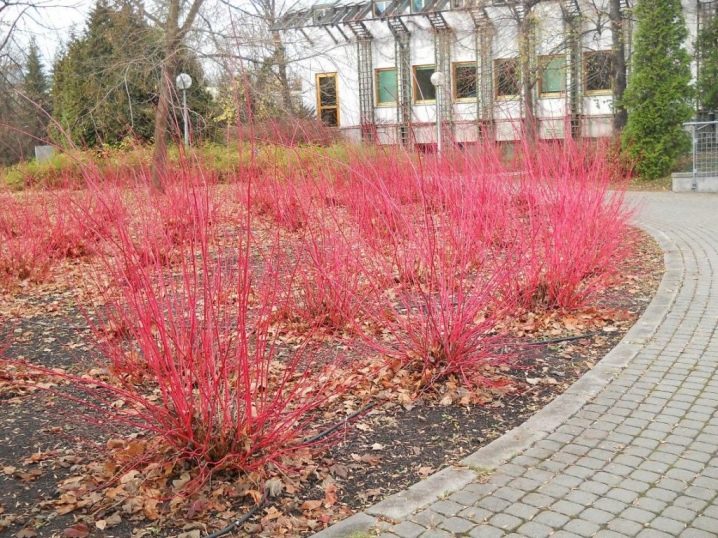
Since derain perfectly tolerates gas pollution, hot asphalt vapors and other negative conditions of the city, it is widely used for landscaping streets. Most often these are fences of various sizes - from 1 to 2 m. School and kindergarten areas, sports and playgrounds are surrounded by green parapets - since the dogwood has no toxic properties, therefore it is not dangerous for children, moreover, it has the ability to quickly heal after damage. In parks and squares, a ball-shaped lawn is often placed in the center of rabatki, lawns. With the help of a haircut "Siberica" can be given various shapes: candles, hemispheres, columns, arcs, as well as various animals and geometric shapes that will serve as an adornment of large spaces. The decorative qualities of deren make it attractive and widely used in landscape design.
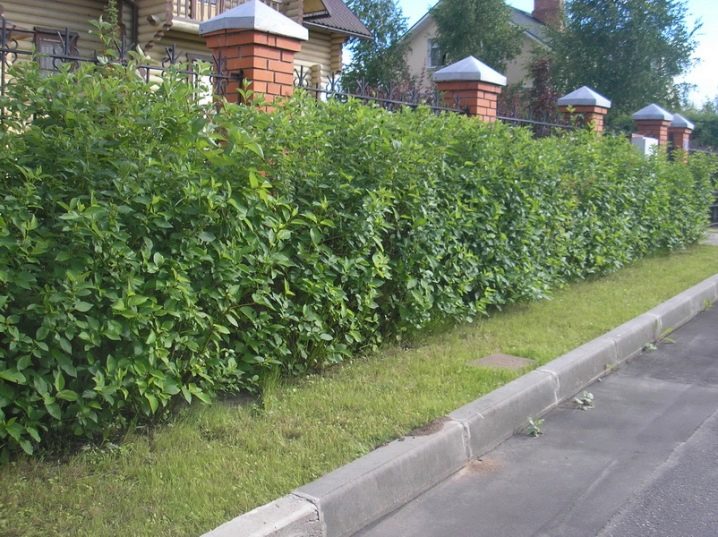
For information on how to propagate and plant the white turf "Siberica", see the next video.

































































The comment was sent successfully.